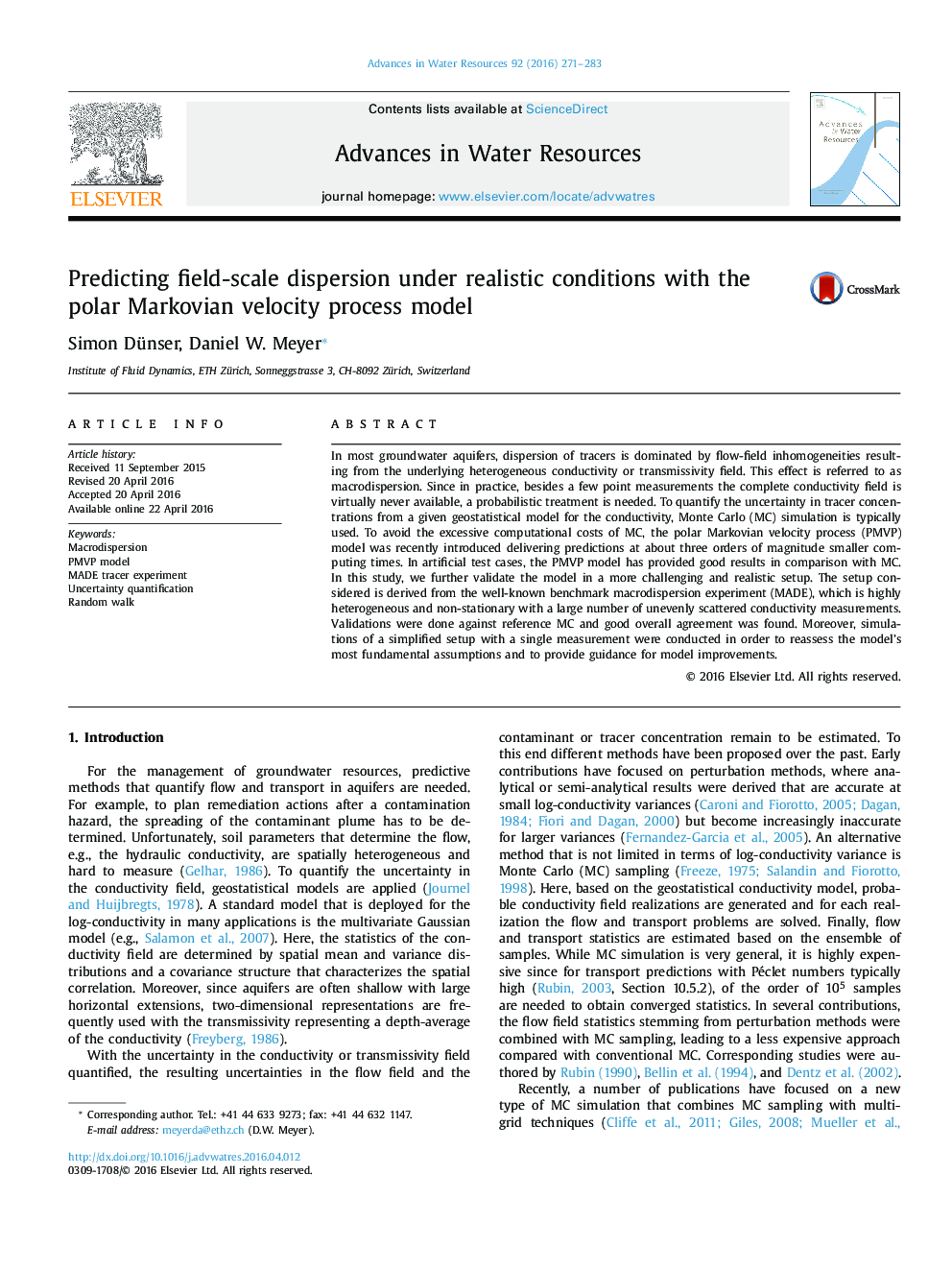| Article ID | Journal | Published Year | Pages | File Type |
|---|---|---|---|---|
| 6380836 | Advances in Water Resources | 2016 | 13 Pages |
Abstract
In most groundwater aquifers, dispersion of tracers is dominated by flow-field inhomogeneities resulting from the underlying heterogeneous conductivity or transmissivity field. This effect is referred to as macrodispersion. Since in practice, besides a few point measurements the complete conductivity field is virtually never available, a probabilistic treatment is needed. To quantify the uncertainty in tracer concentrations from a given geostatistical model for the conductivity, Monte Carlo (MC) simulation is typically used. To avoid the excessive computational costs of MC, the polar Markovian velocity process (PMVP) model was recently introduced delivering predictions at about three orders of magnitude smaller computing times. In artificial test cases, the PMVP model has provided good results in comparison with MC. In this study, we further validate the model in a more challenging and realistic setup. The setup considered is derived from the well-known benchmark macrodispersion experiment (MADE), which is highly heterogeneous and non-stationary with a large number of unevenly scattered conductivity measurements. Validations were done against reference MC and good overall agreement was found. Moreover, simulations of a simplified setup with a single measurement were conducted in order to reassess the model's most fundamental assumptions and to provide guidance for model improvements.
Related Topics
Physical Sciences and Engineering
Earth and Planetary Sciences
Earth-Surface Processes
Authors
Simon Dünser, Daniel W. Meyer,
